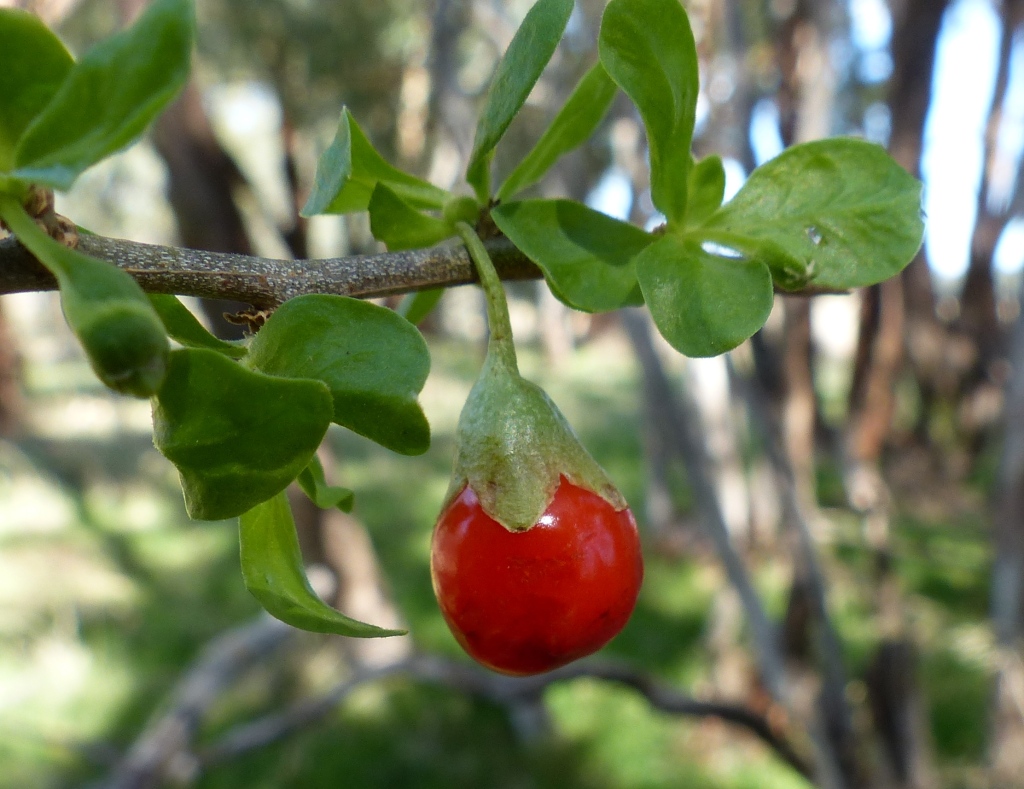Lycium ferocissimum
Miers African Box-thornIntricately branched shrub to 4 m high, more or less glabrous; main branches rigid, lateral branches leafy, ending in a stout spine. Leaves usually clustered, mostly obovate, 10–40 mm long, 4–10 mm wide, apex obtuse or rounded, base attenuate into a short petiole, margins entire, slightly fleshy, green. Flowers usually solitary in axils; pedicels 5–16 mm long; calyx more or less tubular, 4–7 mm long, lobes triangular, 1–2 mm long; fruiting calyx often 2-lipped; corolla 10–12 mm long, pale lilac or white, often blotched lilac towards base of lobes, lobes sub-orbicular; stamens 5, exserted by 2–4 mm, anthers 1–1.5 mm long; pistil c. 10 mm long. Berry more or less globose, 5–12 mm long, orange-red; seeds 35–70, c. 2.5 mm long, dull yellow. Flowers mainly spring and summer.
LoM, MuM, Wim, GleP, Brid, VVP, VRiv, MSB, RobP, MuF, GipP, OtP, WaP, Gold, CVU, GGr, DunT, NIS, EGL, EGU, WPro, HSF, HNF, OtR, Strz. Naturalized in all States, New Zealand. Native to South Africa. Widespread throughout much of Victoria, often in urban wasteland as well as agricultural and pastoral regions. Formerly used as a hedge plant; now declared a noxious weed.
Jeanes, J.A. (1999). Solanaceae. In: Walsh, N.G.; Entwisle, T.J., Flora of Victoria Vol. 4, Cornaceae to Asteraceae, pp. 332–365. Inkata Press, Melbourne.
 Spinning
Spinning




